With the help of several people who have generously contributed, the monthly blogs or stories about Surrey Hills have reached their conclusion after four years.
All good things must eventually come to a natural end.
In finishing my Surrey Hills stories this month, I thought it worthwhile to sign off by reflecting on the varied views on what makes Surrey Hills so special and unique.
I would like to add the Aboriginal connections to the land for this reflection. After all, their stewardship created much of the native grasslands through their practices over millennia.
Unfortunately, little is recorded of their occupation, and early settlement severely disrupted their reliance on storytelling passed from generation to generation. And yet Surrey Hills still bears the mark of their ancient practices. Their deep connection, though often unrecorded, is felt in the soil and vegetation.
The current owner, Forico, has developed a Reconciliation Action Plan, which, among other things, fosters a greater awareness and engagement with the Aboriginal community at three important cultural sites under their management, including Surrey Hills – an opportunity to bridge the past with the present.
Over time, we hope this process provides more clues about the Aboriginal connection to Surrey Hills and highlights what they find special about the place. However, it is no secret that it is challenging to deal with modern Aboriginal representatives who have a completely different perspective on land.
Surrey Hills wears its heart on its sleeve, and unless one stops, opens their eyes to what it reveals, and reflects on its magic and wonder, they will fail to appreciate its talismanic attraction.
The introduction to my book outlines my journey of stopping, reflecting, opening my eyes and mind, and allowing me to develop an intimate connection to the place.
I have many memories. Surrey Hills isn’t just a place; it’s a part of me. My connection to this land is deeply personal, rooted in countless explorations and quiet moments of reflection.
The historical tapestry of Surrey Hills is as rich as its landscapes. It has seen many transformations, from the first Aboriginal impacts to the early days of European settlement, and finally the modern forestry practices. Yet, despite these modifications, the essence of Surrey Hills endures.
Here are jut a few of my social memories.
I will never forget my first exploration of Mount Moory, witnessing the spread of the buttongrass plain up the steep hill towards the peak.

The endless open vista at Blackmarsh buttongrass plain is still laid out as it was for millennia before Europeans arrived.
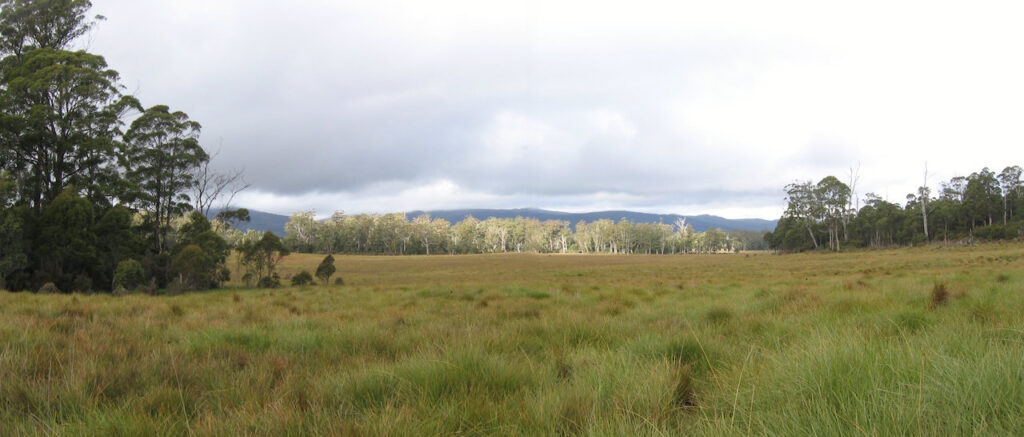
Experiencing the rich human history at Thompsons Park, where time has stood still. Picking the right location, I could conjure the same picturesque view witnessed by Hellyer nearly 200 years ago.
The thrill of walking along the remains of the Great Western Road, built in 1827, and still preserved in a patch of rainforest near the southern boundary.
A near disastrous exploration with two other work colleagues of Mount Pearce that exposed the hidden hurdles one faces trying to get through patches of bauera, old growth buttongrass and crouching through dense understorey, suffering persistent cramps from severe dehydration towards the end of a long day.
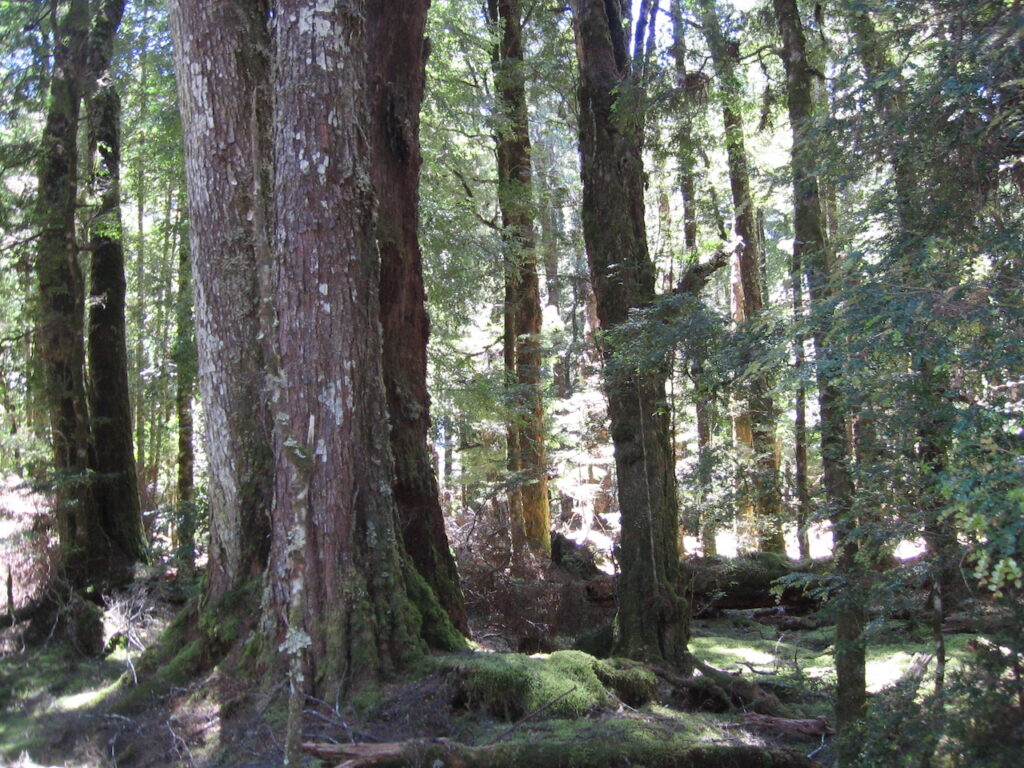
Exploring a very mature myrtle rainforest by myself on a hot summer’s day. Experiencing the strange and the eerie crunch of dry litter underfoot when, typically most of the year, it is soft and damp.
While walking through Racecourse Plain on rare, windless summer mornings counting Ptunarra brown butterflies, it was always magical seeing Surrey Hills’ imposing sentinel in the background – St Valentines Peak. That vista was a serene beauty that always captured my heart.
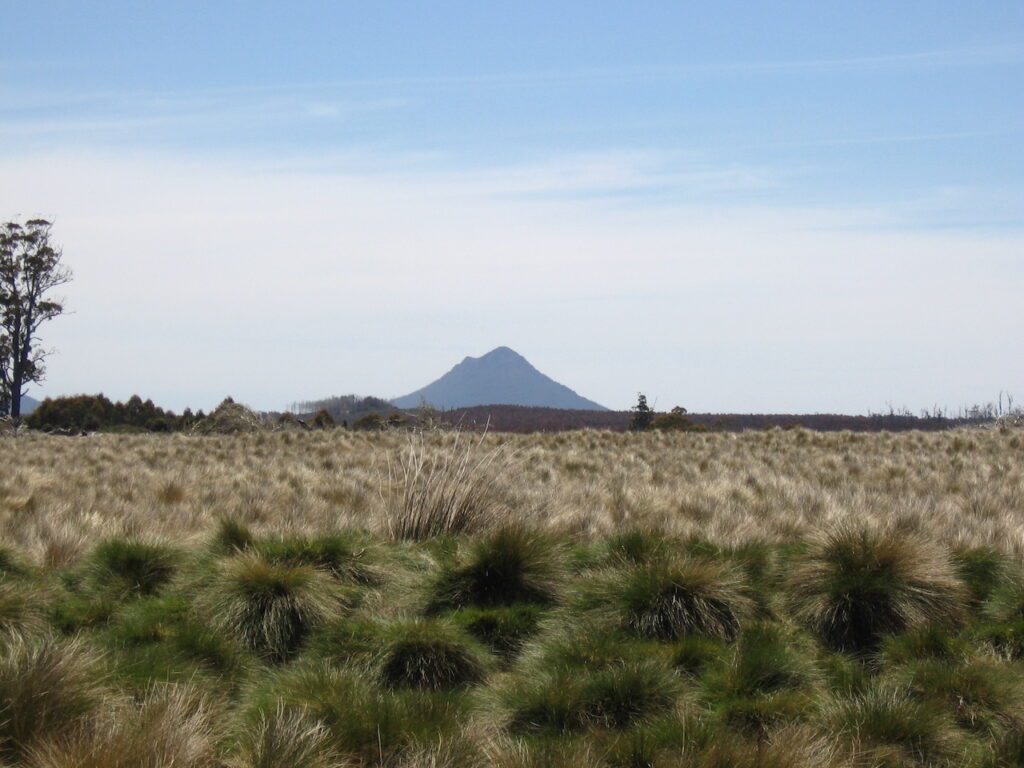
There was also the excitement in discovering the historical drainage channels and experimental improved pasture plots that signified the attempts by AFH to farm the moorlands.
I am certainly not the only one with a strong affinity with Surrey Hills. In Chapter 13 of the book, I outlined the connection Brian Rollins developed for the place. His profoundly personal story last month reinforced how his appreciation of Surrey Hills’ splendour was a way of coping with personal tragedy. His story is an evocative reminder of the powerful hold Surrey Hills can take on our consciousness. His words in an email summarise the important role Surrey Hills played in his life:
The Surrey Hills is not just a place of historical and ecological interest to me; it is probably my favourite place in Tasmania … it’s in my soul.
Mike O’Shea, who shared a blog in two parts about the development of surveying and equipment here and here while working at AFH for 30 years, all but two years in the north-west, believed Surrey Hills inevitably drew you in and never let you go:
Once you’ve spent time there, you have a connection – this stays with you.
For entomologist David de Little, who began his involvement at Surrey Hills in 1973 while doing his PhD studies, he was utterly entranced by the area because it contained all the different types of vegetation and ecological attributes he learnt at university:
All the insects I’d studied were there in profusion … Surrey Hills really was the ‘promised land’ as far as I was concerned.
Ian Blanden joined AFH in 1987 and worked his way through to senior management positions. He saw Surrey Hills as an essential asset and possibly summed up the feelings of those who were fortunate to work in the area:
I think we were all very proud to be the custodians of such a large contiguous forest area in which there was such significant evidence, and long history, of aboriginal and European occupation.
Even though Chris Davey filled the role of Resource Manager in the north-west during the heady Gunns days, he loved his role, particularly managing the native grasslands. He applied his considerable fire management experience during tight budgetary constraints and was influential in securing the necessary funds to conduct the annual aerial burning program.
Not many people can fly around in helicopters setting fire to things, but I can say that was the best job I ever had!
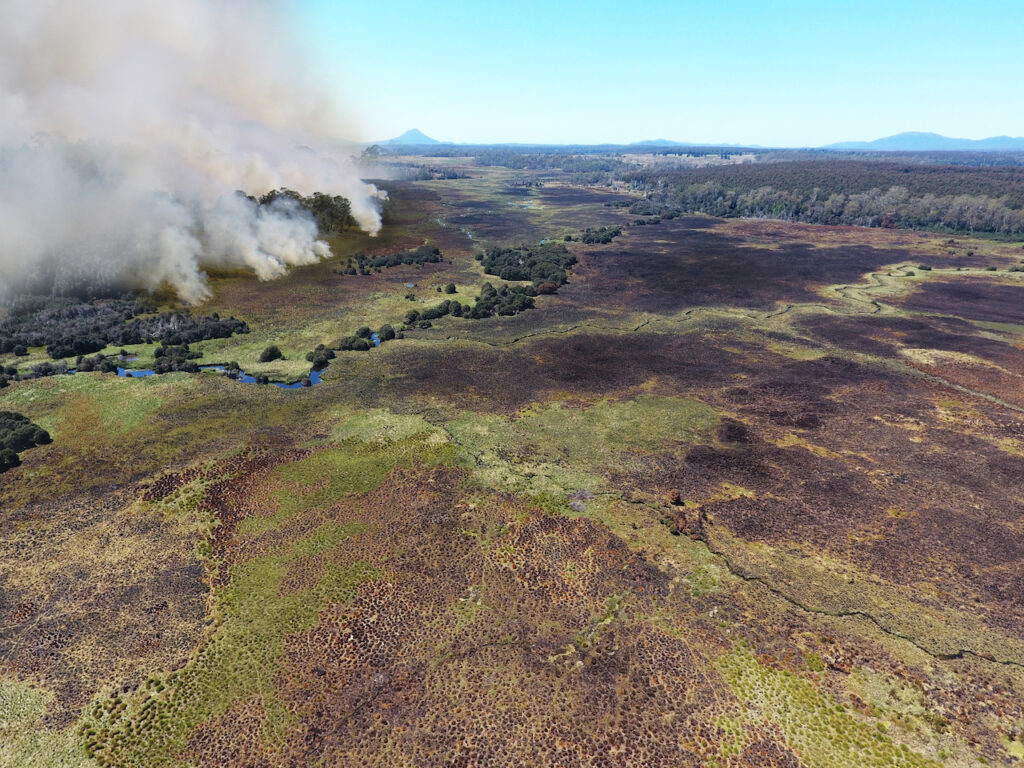
The appreciation of Surrey Hills was first written about by the early settlers associated with the Van Diemen’s Land Company (VDL Co.).
When Henry Hellyer first walked on Surrey Hills in early 1827, he saw lightly timbered areas and open grassy plains he thought were ideal for the VDL Co’s intention to introduce Merino sheep. The landscape overwhelmed him:
… we ascended the most magnificent grass hill I have seen in this country, consisting of several; level terraces, as if laid out by art, and crowned with a straight row of stately peppermint trees; beyond which there is not a tree for four miles along the grassy hills.
Edward Curr, the company’s first Land Agent, was effusive about the scenery laid out before him:
I have been particularly pleased on this journey with the Country on the banks of the Wey, which I had never seen before, it is superior to most parts which have yet been occupied and presents for several miles a succession of the most pleasing and varied scenery.
However, he was responsible for introducing the Merino sheep and had immediate doubts about the suitability of hosting such a venture at Surrey Hills. After inspecting the area for the first time in the winter of 1827, he admitted Surrey Hills:
… can never be a first class nor even a second rate sheep pasture.
I think Geoff Dean best summarised the initial attraction and subsequent ignorance of the VDL Co. staff to understand Surrey Hills in those early days:
Surrey Hills was a siren beauty whose virtues were manifest, but whose vices remained hidden. Company staff struggled to understand her, and as late as 1842 they were still experimenting with sheep, encouraged by the ample grasslands only to be ruined by sudden cold conditions and enduring damp.
Curr had to admit their mistakes finally, and while he raised hopes of modifying their practices to allow them to continue farming, Surrey Hills failed to yield to their efforts:
We have hitherto been acting against nature and it may be taken as an axiom, that we can have no success until we adapt our pursuits in the nature of the district which has fallen to our share.
Dr John Hutchison, who believed it was pointless trying to run livestock on Surrey Hills, wrote to the Court of Directors in London in 1834 with the prescient words:
There is no country or climate so deceiving as the Hampshire and Surrey Hills.
Surrey Hills is a moody place. The continual low-pressure weather systems that pass over the state roar up from the south-west, magnifying the bitterly cold south-westerly winds and precipitation totals of over two metres a year. It certainly wasn’t amenable to the foreign traditional European farming practices.
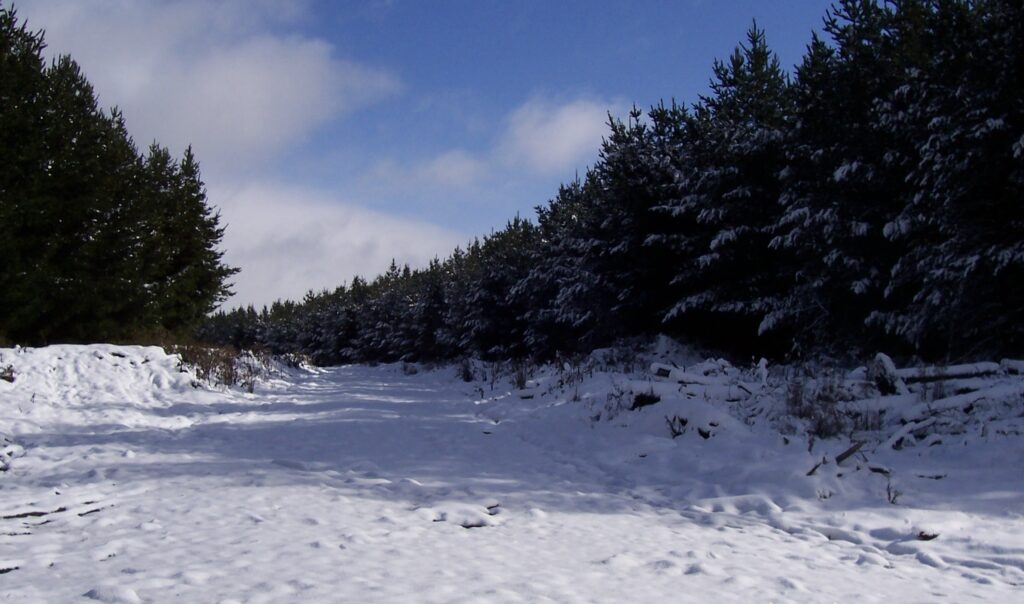
While my writings have favoured an emphasis on the beauty of Surrey Hills, I should confess to those who do not know the place that nearly half the area is a highly modified environment. It supports Australia’s largest hardwood plantation estate, replacing native forests and woodlands that were logged and cleared. I am probably guilty of glossing over the past forestry management practices on Surrey Hills to focus on a more romanticised historical account instead.
Barry Graham began working at Surrey Hills in 1957 straight out of school. During his career, he spent time in New Zealand and Canada and returned to Surrey Hills in 1994 after a 20-year absence. He was shocked at the rapid conversion of large areas from native forests and woodlands to plantations during his absence and would often reflect loudly over a paradise lost.
It was apparent Surrey Hills held a strong attraction for him, even after his long absence:
I had quite a romantic attraction to Surrey Hills. It is a unique tract of land – it was like going into a park. The land in the main was gentle and rolling with a few protruding rocky peaks around its perimeter and was still mostly covered by, lush, open and mature eucalypt forest.
He would fondly reminisce about the good old days before the plantations. The days before Surrey Hills was reduced from its former “Eden” into a “gigantic mix of tree farm and remnant native forest”. With the introduction of fully mechanised operations in the late 1990s, Barry felt “there was no heart” – he pined for the return to days where men did the falling who were:
… a tough breed, honest to the core, hard-working and skilled at their trade, be it with a cross cut saw and axe, power saw, sleeper cutting tools, spalling hammer, log truck driving and equipment operation.
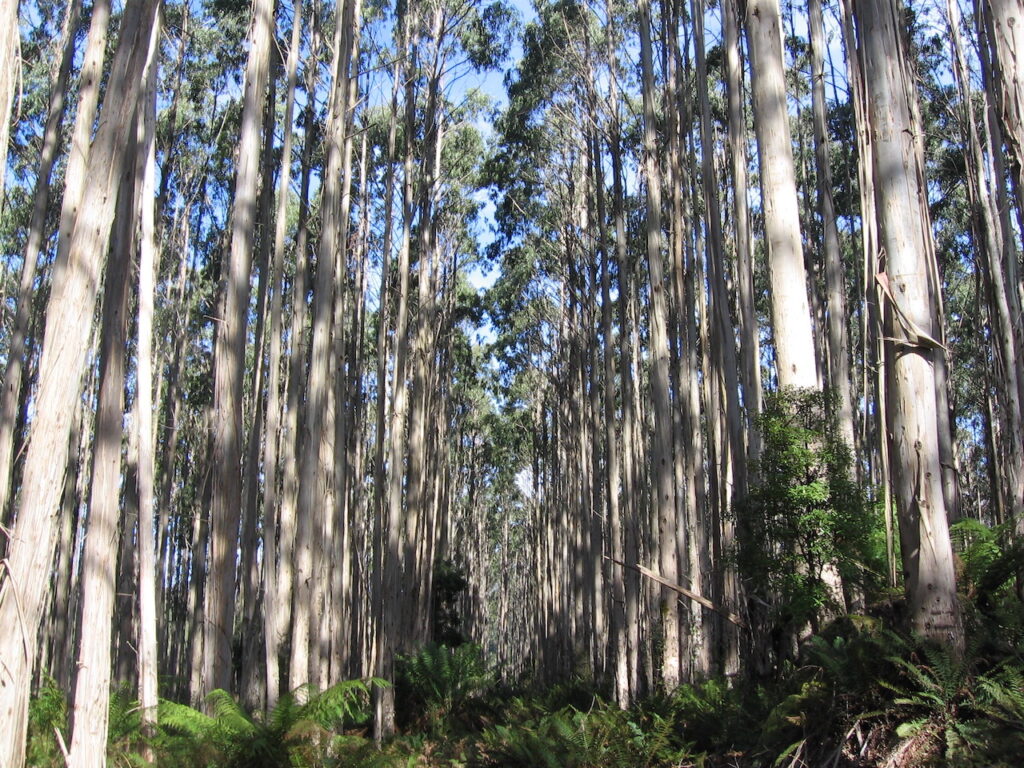
In 1999, there were five fatalities among workers in Tasmania, including a tree faller working on a large myrtle tree and a truck driver, both on Surrey Hills. The managing director of the parent company, North Limited, warned that if there was another fatality, they would walk away from the forestry business. The pressure was on to change, and lead to the total mechanisation of operations by 2003.
From a forest practices point of view, Surrey Hills was out of sight and out of mind, and AFH could do what they liked with very little outside interference. It meant they could carry out anything to get the timber to the mills quickly and cheaply. In some cases, operations were not always best practice nor particularly beneficial to the environment by today’s standards.
According to Les Baker, when he started in 1980 working under Dick de Boer, he believed the native forests on Surrey Hills were managed poorly, with appalling harvesting practices. Winter harvesting (which could last for up to nine months a year) was awful. Surrey Hills also had a reputation for wasting a lot of timber because of the early operations and structure of the Burnie pulp and paper mill and sawmill suppliers.
Conditions in Surrey Hills made it challenging to implement a silvicultural system to ensure maximum possible yield. It led to the problem I outlined under the “Regeneration Dilemma” in Chapter 11 of my book.
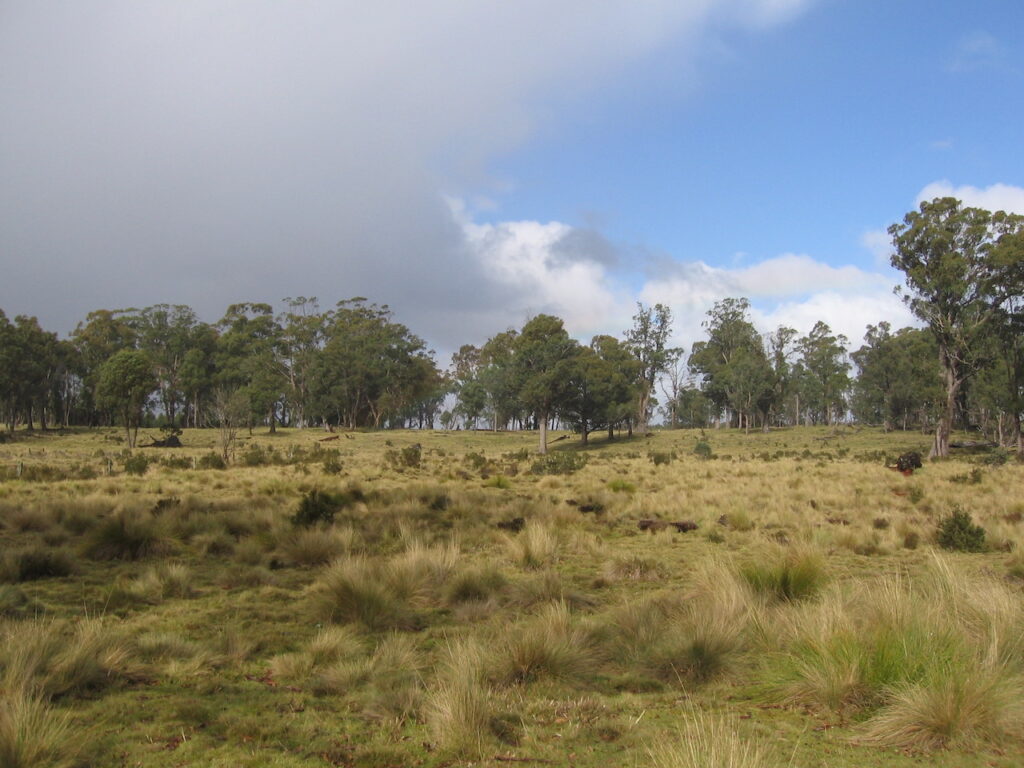
To be fair to those involved, the practices were part of a cultural attitude rather than any individual incompetence. The requirements of the Burnie pulp and paper mill drove the way Surrey Hills was managed. The workers did the best they could at the time.
Another problem was the continual utilisation of timber on Surrey Hills to reduce the weighted average logging costs in the broad north-west region nearly every year as part of budget repair. That practice ultimately had consequences in later years. The most accessible wood was eventually cut out, leaving “slivers” of landlocked or difficult patches of timber. When reality hit, and there was an inevitable write-down of the standing forest resource with a much lower yield, AFH made some managers unfortunate scapegoats for the short-term fiscal decisions by past senior management.
Everyone agrees that introducing a Code of Practice in the mid-1980s improved forestry practices on Surrey Hills.
During the North Forest Product days, the woodchip businesses at Triabunna and Tamar were amalgamated with the north-west operations under one company. There was a friendly but fierce rivalry over funds and recognition. Triabunna and Tamar believed the north-west received the “royal treatment” because it was perceived as the “jewel in the Crown”. Managers always took visitors to Surrey Hills to showcase business operations and highlight some important non-forestry attributes.
Chapter 11 of the book provides a remarkable history of developing the eucalypt plantation estate on Surrey Hills. AFH had to start from scratch to discover what tree species could successfully survive on Surrey Hills and how to grow them commercially and on a large scale. The focus on tree breeding and clonal research in the Fibre Technology laboratory at Ridgley was another area showcased to visitors.
Andrew Wye, who worked at both Tamar and Triabunna, but not the north-west, although he was involved in significant projects that involved assessments of the north-west business, felt Surrey Hills:
… was a tribal place – you almost needed a passport to cross the border and enter Surrey Hills.
We are fortunate we had some foresters who focused on protecting the significant cultural assets found on Surrey Hills, albeit a little late for some bulldozed sites in early plantation establishment work, particularly in the Hampshire Hills area, but also on Surrey Hills. Andy Warner and Bruce Hodgetts deserve notable accolades for their pioneering work in trying to protect both Aboriginal and European sites. The influence of Brian Rollins at this time cannot go unnoticed either.
Today, the management of Surrey Hills is in good hands. The many non-timber values have been recognised in a way that can be measured, audited and approved by independent assessors, making these values part of the overall business system. The strategic value of Surrey Hills is recognised as being much more significant than just its timber value.
And that is a good thing.
Let’s hope some of the recent announcements regarding major renewable energy projects on Surrey Hills do not detract or spoil its deserved reputation. If they do go ahead, hopefully they do no more than add to the industrial tapestry forestry has already provided to the landscape.
As I reflect on my journey at Surrey Hills for the final time, I am reminded of its profound impact on my life. This land, with its rugged beauty and hidden stories, has been a constant source of inspiration and solace for nearly half my life time. Surrey Hills is not just a memory; it’s a testament to the enduring power of nature and the importance of preserving such treasures for future generations. I am proud of my role in achieving that.
I can finally see why, in the words of Brian Rollins, it is a place that stays with you, long after you have left its physical bounds and why it is a sanctuary for the soul.
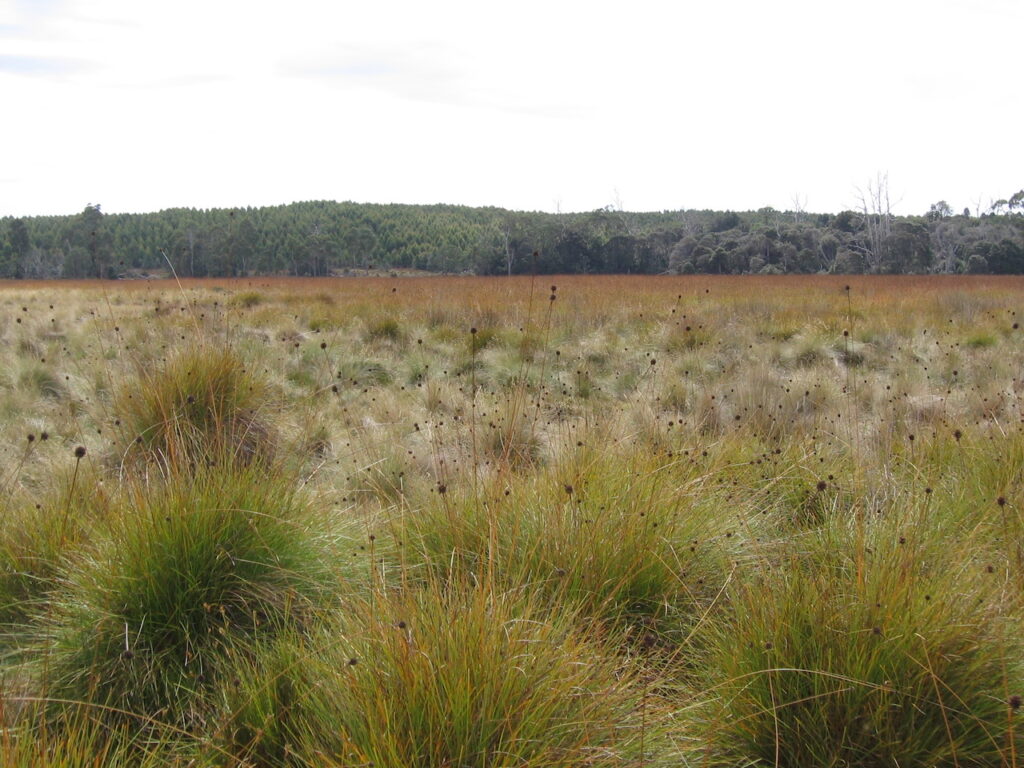
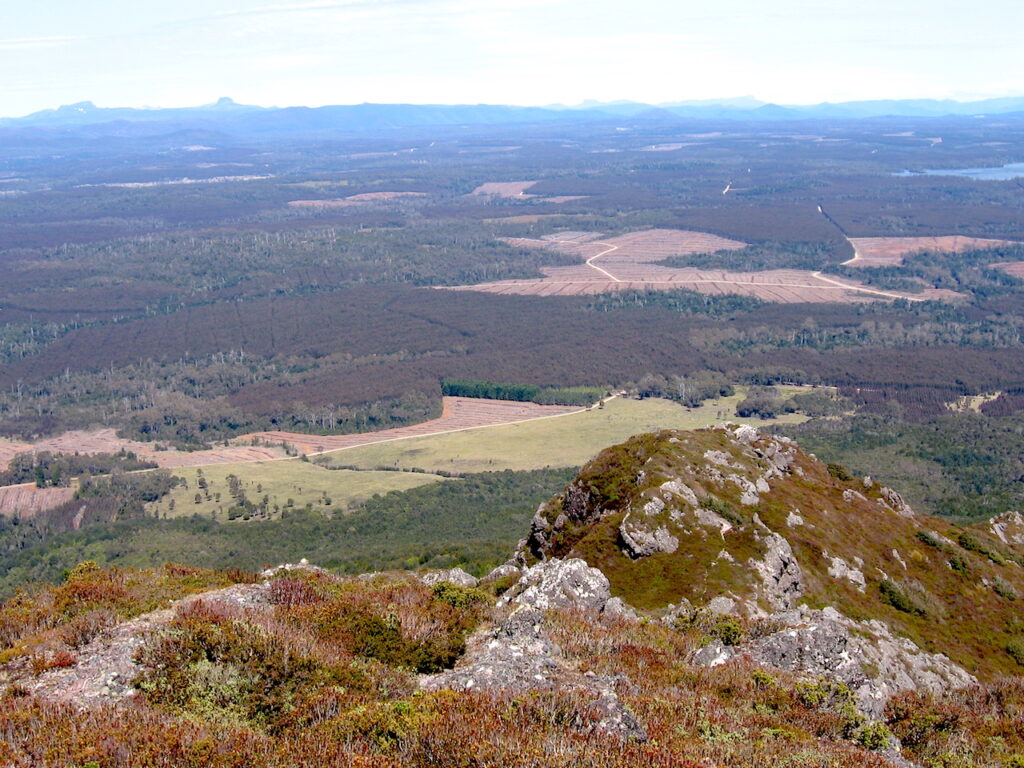
Thank you for all your writing and the many smiles and reflections/memories you have been a steward for. Good luck with your new writing direction.
I love reading your stories on Surrey Hills Robert.
Being born and growing up at Hampshire, I also have it deep inside me. There are so much historical and wonderful memories at Hampshire Surrey Hills.
Our family connection with Hampshire and Surrey goes back to my great grandfather who moved to Hampshire Hills in approx 1920. Then my grandfather trapped and snared on Surrey back in the 1930s. Then dad starting sleeper cutting on Surrey in the 1960s. Then onto our logging business.
Wonderful memories. Such a unique place.
You should be proud of your stories Robert. 🙂
Well done mate, I have your book on Surry Hills.
I climbed St Valentines Peak. It is a pity you weren’t available to do tours of the area when working there.
As us Tassy explorers were locked out of places to visit by big gates and signs in our own state of history. A lot like PWS shut everything up.
Saying that, you impressed me with your resources and made interesting reading.
I visited Fraser Island in 1976 and drove around what was left of logging camps. Sorry no photos taken only long beaches which impressed us coming from Tasmania.
Great read Robert.
Brings back many memories of my early cadetship days in the Tech. Div. at Burnie.
I was the chip tester in the lab and had to screen and measure chips daily from samples taken from the sawmill and wood-room. In all, I spent 47 years at Burnie and Wesley Vale mills!
Thanks for the thoughts you put into words and the information about the people who preserved the land.
You are absolutely right, you either love the place or hate it. To me, it was a place of fresh and breezing air.
Not a nice place to work, but nice to know it.
I’m one of the “citizen scientists” who has been involved with the crowded leek orchid on Surrey Hills for many years now, including initially while Robert was on staff.
It has been personally very fulfilling and a great privilege to meet constructively across the divide of nature conservation and forestry/business. Not to forget regular access to the wonderful native grasslands.
I feel that Forico’s outreach with the community has been outstanding, and I’m very heartened now to know about further outreach with the Reconciliation Action Plan. It provides me with a vision of how land management could be so much more inclusive, especially where rare landscapes, communities and species are known.
Well done Robert, and all at Forico including its corporate predecessors.
Maybe we’re also lucky that Surrey Hills is in a remote corner of Tasmania, as Robert describes here!
Thanks for your writings Robert. You have certainly added to the public knowledge of the area.
I was fortunate to see many areas in the property in my time supporting the weather stations and hydrology network. So much data gathered and now probably lost in the mists of time.
It has been interesting in more recent times to research the historic areas that Brian Rollins introduced us to.
So many other familiar names mentioned. I have met many of them.
Thank you!
Thanks Robert. I have enjoyed reading your Surrey blogs over the recent years.
I am pleased to note that Andy Warner and Bruce Hodgetts get mentioned in your final blog to recognise their contributions to the earlier days of conservation management.
Andy was my first boss at AFH, and he had a real passion for evaluating and improving our understanding of the non-wood values on Surrey. His significant contribution is something that many may not realise or understand.
It has been an absolute privilege to have spent the majority of my forestry career working and contributing to the unique story that is Surrey Hills.